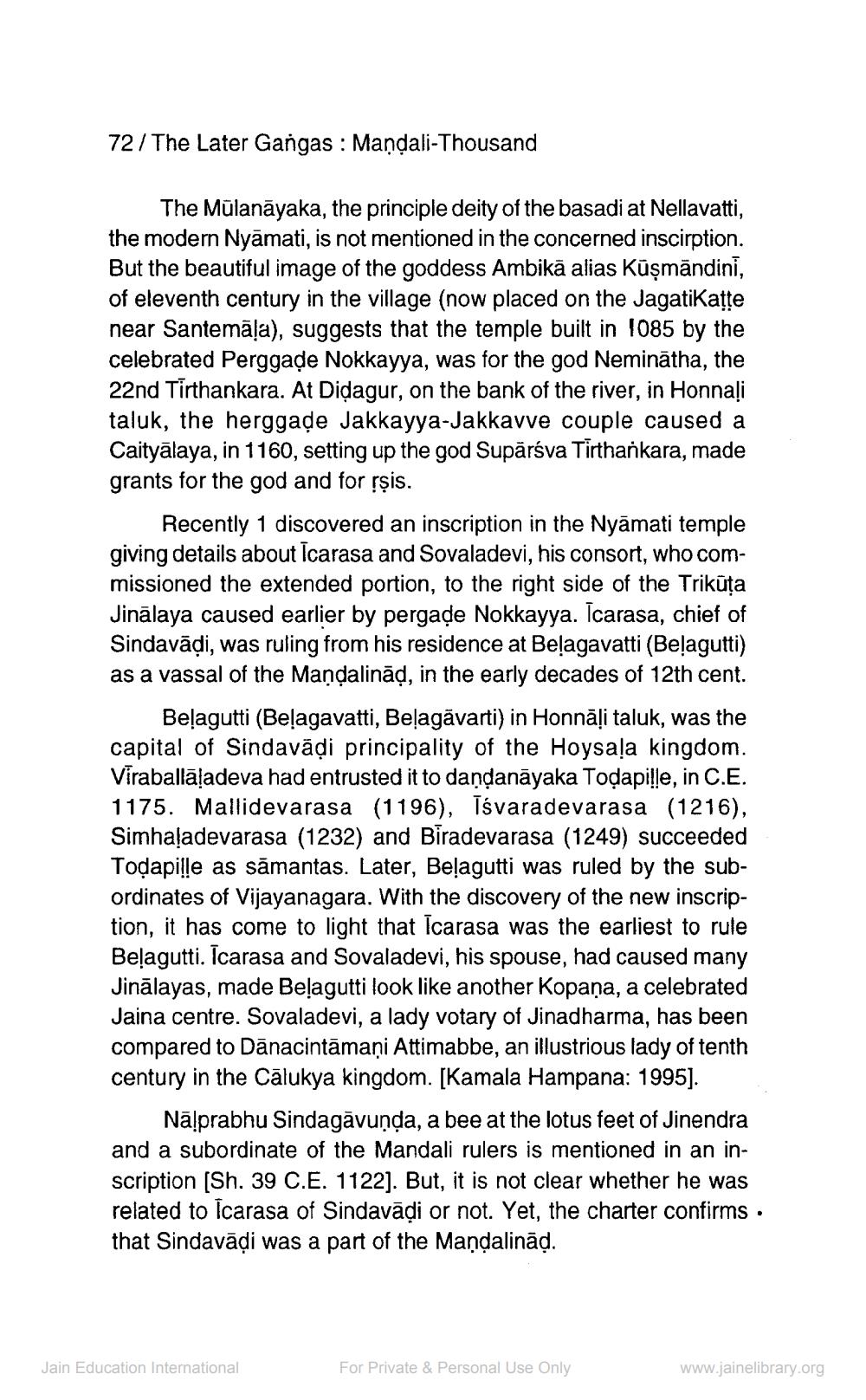________________
72/The Later Gangas: Mandali-Thousand
The Mulanayaka, the principle deity of the basadi at Nellavatti, the modern Nyamati, is not mentioned in the concerned inscirption. But the beautiful image of the goddess Ambikā alias Kūṣmāndini, of eleventh century in the village (now placed on the JagatiKatte near Santemāļa), suggests that the temple built in 1085 by the celebrated Perggaḍe Nokkayya, was for the god Neminatha, the 22nd Tirthankara. At Didagur, on the bank of the river, in Honnali taluk, the herggade Jakkayya-Jakkavve couple caused a Caityalaya, in 1160, setting up the god Supärśva Tirthankara, made grants for the god and for ṛsis.
Recently 1 discovered an inscription in the Nyamati temple giving details about Icarasa and Sovaladevi, his consort, who commissioned the extended portion, to the right side of the Trikūța Jinālaya caused earlier by pergaḍe Nokkayya. Icarasa, chief of Sindavāḍi, was ruling from his residence at Belagavatti (Belagutti) as a vassal of the Mandalināḍ, in the early decades of 12th cent.
Belagutti (Belagavatti, Belagāvarti) in Honnāļi taluk, was the capital of Sindavāḍi principality of the Hoysala kingdom. Viraballāļadeva had entrusted it to dandanayaka Toḍapille, in C.E. 1175. Mallidevarasa (1196), Īsvaradevarasa (1216), Simhaladevarasa (1232) and Biradevarasa (1249) succeeded Toḍapille as sāmantas. Later, Belagutti was ruled by the subordinates of Vijayanagara. With the discovery of the new inscription, it has come to light that Icarasa was the earliest to rule Belagutti. Icarasa and Sovaladevi, his spouse, had caused many Jinālayas, made Belagutti look like another Kopana, a celebrated Jaina centre. Sovaladevi, a lady votary of Jinadharma, has been compared to Danacintāmaṇi Attimabbe, an illustrious lady of tenth century in the Calukya kingdom. [Kamala Hampana: 1995].
Nālprabhu Sindagāvuṇḍa, a bee at the lotus feet of Jinendra and a subordinate of the Mandali rulers is mentioned in an inscription [Sh. 39 C.E. 1122]. But, it is not clear whether he was related to Icarasa of Sindavāḍi or not. Yet, the charter confirms. that Sindavāḍi was a part of the Maṇḍalināḍ.
Jain Education International
For Private & Personal Use Only
www.jainelibrary.org




